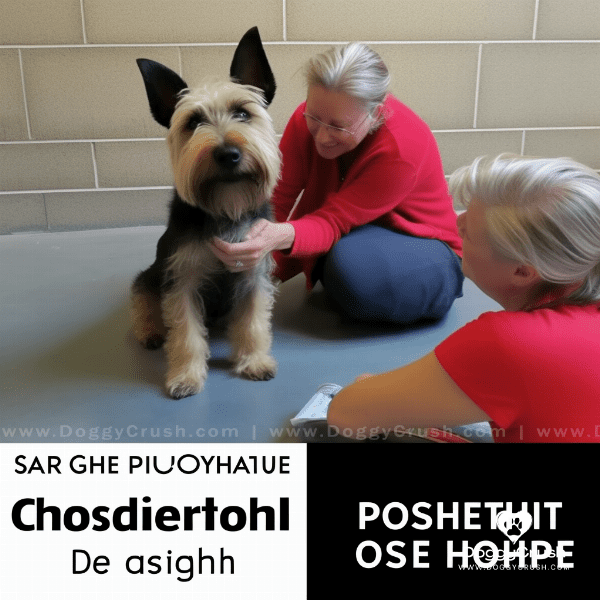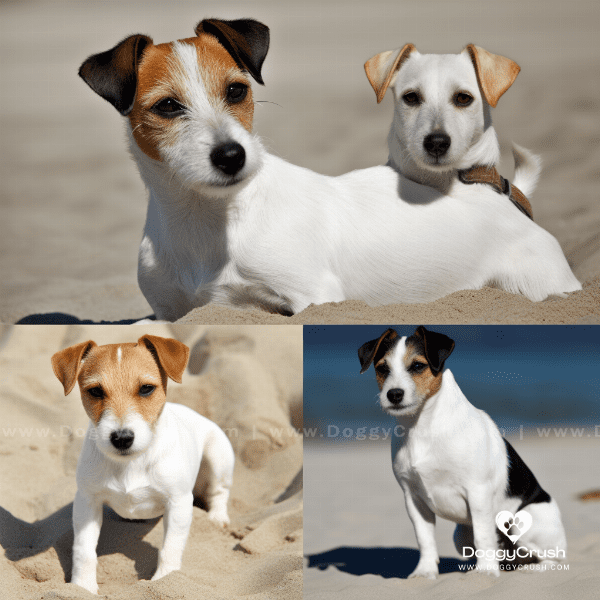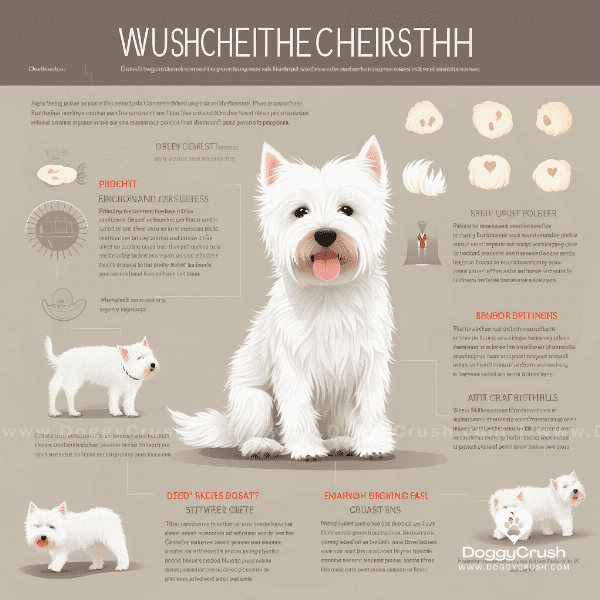Table of Contents
- History and Origin of the Scottish Terrier
- Physical Characteristics of Scottish Terrier Dog Breed
- Temperament and Personality of Scottish Terrier Dogs
- Health Issues Commonly Found in Scottish Terriers
- Grooming and Care Tips for Scottish Terrier Owners
- Training Your Scottish Terrier: Tips and Techniques
- Feeding and Nutrition for Scottish Terriers
- Exercise Requirements for Scottish Terrier Dogs
- Living with a Scottish Terrier: Pros and Cons
- Scottish Terrier Rescue and Adoption: What You Need to Know
History and Origin of the Scottish Terrier
The Scottish Terrier, also known as the “Scottie,” is a small but sturdy terrier breed that originated in Scotland. This breed has a rich history that dates back to the 16th century. Scottish Terriers were originally bred for hunting small game such as badgers, foxes, and rodents.
Early Development of the Scottish Terrier
The exact origin of the Scottish Terrier is unknown, but it is believed to have developed from other terrier breeds in Scotland such as the Cairn Terrier and the West Highland White Terrier. Early Scottish Terriers were known for their courage, tenacity, and hunting abilities, which made them popular among Scottish farmers and gamekeepers.
Scottish Terriers in Pop Culture
Scottish Terriers have been popularized in pop culture, particularly in the United States. Presidents Franklin D. Roosevelt and George W. Bush both owned Scottish Terriers, and the breed has been featured in movies such as “Lady and the Tramp” and “101 Dalmatians.”
The Scottish Terrier’s Role in War
During World War I and II, Scottish Terriers played a vital role in the war effort. They were used as messenger dogs and guard dogs, and their small size and bravery made them well-suited for these tasks. In fact, a Scottish Terrier named “Sergeant Stubby” became a decorated war hero for his service in the U.S. Army.
The Scottish Terrier Today
Today, Scottish Terriers are popular family pets and are known for their loyalty, intelligence, and independence. While they are no longer used for hunting, they still possess their innate instincts and are known for their strong prey drive. Scottish Terriers are also successful in various dog sports, such as agility and obedience.
In conclusion, the Scottish Terrier has a rich and fascinating history that spans centuries. From their humble beginnings as hunting dogs to their roles as beloved family pets, Scottish Terriers have played an important role in Scottish culture and beyond.

Physical Characteristics of Scottish Terrier Dog Breed
Scottish Terriers are small but sturdy dogs, with a distinctive shape and appearance that sets them apart from other breeds. Here are some of the physical characteristics that make Scottish Terriers unique:
Size and Shape
Scottish Terriers are typically between 10-11 inches tall at the shoulder and weigh between 18-22 pounds. They have a long, narrow body with short legs, a broad head, and a thick, wiry coat that is weather-resistant.
Coat and Colors
The Scottish Terrier’s coat is one of its most distinctive features. It is composed of a hard and wiry outer coat and a soft, dense undercoat that provides insulation. Scottish Terriers can be black, brindle, or wheaten in color, with the black being the most common.
Facial Features
The Scottish Terrier has a broad head with a distinctive beard, bushy eyebrows, and a pointed, erect ear. Their eyes are small and dark, and their muzzle is short and square. The Scottish Terrier’s expression is often described as “admirably savage.”
Body Type
Scottish Terriers have a muscular, compact body with a level topline and a docked tail. They have short, sturdy legs with strong bones and feet that are round and compact. The breed has a strong, sturdy gait that is indicative of their hunting heritage.
Health Concerns
While Scottish Terriers are generally healthy dogs, they are prone to certain health conditions such as skin allergies, autoimmune disorders, and bladder cancer. It’s important for Scottish Terrier owners to work closely with their veterinarian to ensure their dog’s health is monitored and any potential health concerns are addressed promptly.
In conclusion, the Scottish Terrier is a unique and distinctive breed with many physical characteristics that set it apart from other breeds. From their small size and sturdy build to their distinctive coat and facial features, Scottish Terriers are a breed with many physical attributes that make them a beloved pet and loyal companion.

Temperament and Personality of Scottish Terrier Dogs
Scottish Terriers are known for their unique personalities and distinctive temperament. Here are some of the key characteristics that make the Scottish Terrier a beloved companion:
Independent and Confident
Scottish Terriers are known for their independence and confidence. They are not overly affectionate dogs and can be quite stubborn, but they make up for it with their loyalty and devotion to their owners.
Loyal and Protective
Scottish Terriers are fiercely loyal to their owners and are known for their protective nature. They can be wary of strangers and may bark to alert their owners of potential threats.
Intelligent and Inquisitive
Scottish Terriers are intelligent dogs and are known for their inquisitive nature. They have a strong prey drive and may chase after small animals, so it’s important to keep them on a leash or in a fenced yard when outside.
Playful and Energetic
Despite their small size, Scottish Terriers are energetic dogs and enjoy playing and exploring their surroundings. They need regular exercise to stay healthy and happy, and may enjoy games such as fetch or tug-of-war.
Affectionate with Family
While Scottish Terriers may not be the most affectionate breed, they are known for their love and devotion to their family. They thrive on attention and enjoy spending time with their owners.
In conclusion, the Scottish Terrier has a unique and distinctive personality that makes it a beloved companion to many. From their independent and confident nature to their loyalty and protectiveness, Scottish Terriers are a breed with many positive traits that make them a joy to own and a loyal friend for life.

Health Issues Commonly Found in Scottish Terriers
Like all Dog breeds, Scottish Terriers are prone to certain health issues that owners should be aware of. Here are some of the most common health concerns that affect Scottish Terriers:
Allergies
Scottish Terriers are prone to allergies, particularly skin allergies. These can cause itching, redness, and irritation, and may be triggered by a variety of environmental or food-related factors.
Autoimmune Disorders
Autoimmune disorders, such as lupus and hypothyroidism, are relatively common in Scottish Terriers. These disorders occur when the immune system mistakenly attacks healthy cells in the body, leading to a range of symptoms such as lethargy, weight gain, and joint pain.
Bladder Cancer
Scottish Terriers are at a higher risk for developing bladder cancer than other breeds. This type of cancer can cause symptoms such as difficulty urinating, blood in the urine, and frequent urination.
Von Willebrand’s Disease
Von Willebrand’s Disease is a bleeding disorder that affects Scottish Terriers more than other breeds. This disorder is caused by a deficiency in a blood clotting protein and can cause excessive bleeding, particularly during surgery or injury.
Cataracts
Cataracts are a common eye condition that affects many dog breeds, including Scottish Terriers. This condition can cause cloudiness or opacity in the eye, leading to vision impairment or blindness.
It’s important for Scottish Terrier owners to work closely with their veterinarian to monitor their dog’s health and address any potential health concerns promptly. Regular veterinary check-ups and a healthy diet and exercise regimen can help keep Scottish Terriers healthy and happy for many years to come.
In conclusion, while Scottish Terriers are generally healthy dogs, they are prone to certain health issues that owners should be aware of. From skin allergies and autoimmune disorders to bladder cancer and cataracts, Scottish Terrier owners should be vigilant about their dog’s health and work closely with their veterinarian to ensure their dog receives the best possible care.

Grooming and Care Tips for Scottish Terrier Owners
Scottish Terriers have a distinctive wiry coat that requires regular grooming to maintain its health and appearance. Here are some grooming and care tips for Scottish Terrier owners:
Brushing and Bathing
Scottish Terriers should be brushed regularly to remove any loose or dead hair from their coat. A slicker brush is typically used to remove tangles and mats from the coat. They should be bathed every 6-8 weeks with a dog-specific shampoo to maintain the condition of their coat.
Trimming and Stripping
Scottish Terriers require occasional trimming and stripping to maintain the shape and appearance of their coat. Trimming involves using scissors to cut the hair on their face, feet, and tail. Stripping involves removing dead hair from their coat by hand or using a stripping knife.
Nail Care
Scottish Terriers should have their nails trimmed regularly to prevent them from becoming too long or sharp. This can be done using a guillotine-style nail clipper or a grinding tool. It’s important to be careful not to cut the quick of the nail, which can cause bleeding and discomfort.
Dental Care
Dental hygiene is important for Scottish Terriers to prevent periodontal disease and tooth decay. They should have their teeth brushed regularly using a dog-specific toothbrush and toothpaste. Regular dental check-ups with a veterinarian are also recommended.
Exercise and Nutrition
Scottish Terriers require regular exercise to maintain their health and prevent obesity. A healthy diet that is high in protein and low in fillers is also important for their overall health and well-being.
In conclusion, Scottish Terriers require regular grooming and care to maintain their distinctive wiry coat and overall health. Regular brushing, trimming, and stripping, as well as nail and dental care, are all important aspects of Scottish Terrier care. A healthy diet and regular exercise are also key to keeping these beloved pets healthy and happy.
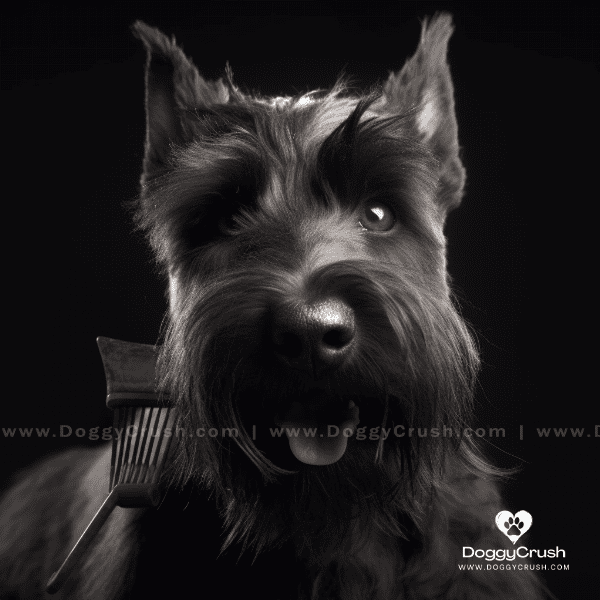
Training Your Scottish Terrier: Tips and Techniques
Training a Scottish Terrier requires patience, consistency, and a firm but gentle hand. Here are some tips and techniques for successfully training your Scottish Terrier:
Positive Reinforcement
Scottish Terriers respond well to positive reinforcement, such as praise, treats, and toys. Rewarding good behavior can help reinforce positive habits and improve their overall obedience.
Consistency
Consistency is key when training a Scottish Terrier. Establishing clear boundaries and rules from the beginning can help prevent confusion and improve their overall behavior. It’s important to be consistent with commands, rewards, and consequences.
Socialization
Socialization is important for Scottish Terriers to ensure they are comfortable and well-behaved around people and other animals. Early socialization can help prevent fear and aggression towards new experiences.
Training Techniques
Scottish Terriers respond well to a variety of training techniques, such as clicker training, positive reinforcement, and obedience training. It’s important to choose a technique that works best for your dog’s personality and learning style.
Leadership
Scottish Terriers are independent dogs, but they still require strong leadership and guidance from their owners. Establishing yourself as a firm but fair leader can help improve their overall behavior and obedience.
In conclusion, training a Scottish Terrier requires patience, consistency, and a firm but gentle hand. Positive reinforcement, consistency, socialization, and leadership are all important aspects of successful training. By following these tips and techniques, Scottish Terrier owners can ensure their dog is well-behaved and happy for many years to come.

Feeding and Nutrition for Scottish Terriers
Feeding a Scottish Terrier a balanced and nutritious diet is essential for their overall health and well-being. Here are some tips for feeding and nutrition for Scottish Terriers:
Protein
Protein is essential for a Scottish Terrier’s diet, as it provides the necessary amino acids for muscle growth and repair. A high-quality protein source, such as chicken or fish, should be the primary ingredient in their food.
Carbohydrates
Carbohydrates are an important source of energy for Scottish Terriers, but they should be limited in their diet. Complex carbohydrates, such as sweet potatoes or brown rice, are preferable over simple carbohydrates, such as white bread or sugar.
Fats
Fats are an important source of energy and play a role in the absorption of vitamins and minerals. Healthy fats, such as those found in fish oil or chicken fat, should be included in their diet in moderation.
Vitamins and Minerals
Scottish Terriers require a balanced mix of vitamins and minerals in their diet to maintain their overall health. A high-quality dog food should contain a balanced mix of essential vitamins and minerals, but additional supplements may be recommended by a veterinarian based on their individual needs.
Feeding Schedule
Scottish Terriers should be fed twice a day, with a consistent feeding schedule to help prevent obesity and other health issues. It’s important to measure their food portions to ensure they are receiving the appropriate amount of food for their size and activity level.
In conclusion, feeding a Scottish Terrier a balanced and nutritious diet is essential for their overall health and well-being. A high-quality dog food that includes a mix of protein, carbohydrates, fats, vitamins, and minerals can help ensure they receive the necessary nutrients to thrive. A consistent feeding schedule and appropriate portion sizes can also help prevent obesity and other health issues.
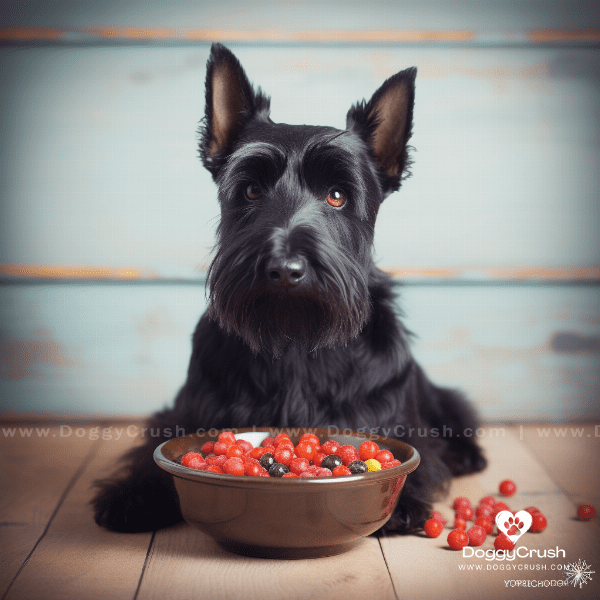
Exercise Requirements for Scottish Terrier Dogs
Despite their small size, Scottish Terriers require regular exercise to maintain their health and well-being. Here are some tips for meeting their exercise requirements:
Daily Walks
Scottish Terriers should be taken on daily walks to help burn off excess energy and prevent boredom. A brisk 20-30 minute walk is typically sufficient for most Scottish Terriers, but some may require more exercise depending on their individual needs and activity level.
Indoor Playtime
In addition to daily walks, Scottish Terriers can benefit from indoor playtime. Toys, such as interactive puzzles or tug toys, can help stimulate their minds and provide additional exercise.
Outdoor Activities
Scottish Terriers enjoy outdoor activities such as hiking, agility, or swimming. These activities can provide additional exercise and mental stimulation, but it’s important to monitor them closely to ensure their safety and prevent overexertion.
Exercise Restrictions
Scottish Terriers should not be over-exercised, particularly when they are young or in warm weather. They are prone to respiratory issues and can overheat easily, so it’s important to provide adequate breaks and access to water during exercise.
Mental Stimulation
In addition to physical exercise, Scottish Terriers require mental stimulation to prevent boredom and destructive behavior. Training, interactive toys, and puzzles can provide mental stimulation and help improve their overall behavior.
In conclusion, Scottish Terriers require regular exercise and mental stimulation to maintain their health and well-being. Daily walks, indoor playtime, and outdoor activities can all provide necessary exercise and mental stimulation for these active and intelligent dogs. It’s important to monitor their exercise and provide adequate breaks and water to prevent overexertion and overheating.
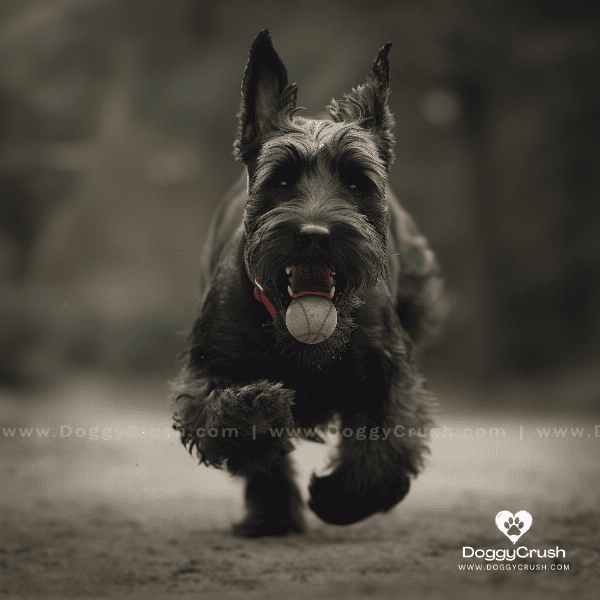
Living with a Scottish Terrier: Pros and Cons
Scottish Terriers are a unique and distinctive breed with their own set of pros and cons. Here are some of the key advantages and disadvantages of living with a Scottish Terrier:
Pros
Loyal and Devoted
Scottish Terriers are fiercely loyal and devoted to their owners. They form strong bonds with their family and are protective of their home and loved ones.
Intelligence and Trainability
Scottish Terriers are intelligent and can be trained to perform a variety of tasks and tricks. They respond well to positive reinforcement and are eager to please their owners.
Independent Nature
Scottish Terriers are independent dogs and are content to spend time alone. This makes them a good choice for people who work full-time or who prefer a more low-maintenance pet.
Low Shedding
Scottish Terriers have a wiry coat that sheds very little, making them a good choice for people with allergies or who prefer a clean home.
Cons
Stubbornness
Scottish Terriers can be stubborn and may require patience and persistence when it comes to training and obedience.
Tendency to Bark
Scottish Terriers have a tendency to bark, which can be a problem for apartment or close-quarters living situations.
Prone to Health Issues
As with all breeds, Scottish Terriers are prone to certain health issues, such as allergies, autoimmune disorders, and bladder cancer.
High Energy Level
Despite their small size, Scottish Terriers have a high energy level and require regular exercise and mental stimulation.
In conclusion, Scottish Terriers are a unique and beloved breed with their own set of pros and cons. They are loyal, intelligent, and independent dogs, but can also be stubborn, prone to barking, and have a high energy level. By understanding these traits and providing proper care and training, Scottish Terrier owners can enjoy a rewarding and fulfilling relationship with their furry companion.

Scottish Terrier Rescue and Adoption: What You Need to Know
If you are considering adopting a Scottish Terrier, there are many options available for rescue and adoption. Here are some things you should know:
Rescue Organizations
There are many rescue organizations that specialize in Scottish Terriers, including the Scottish Terrier Club of America and local breed-specific rescues. These organizations rescue and rehabilitate Scottish Terriers in need and work to place them in loving, permanent homes.
Adoption Process
The adoption process for Scottish Terriers may vary depending on the organization or rescue. Generally, potential adopters will need to fill out an application, provide references, and may need to undergo a home visit. The adoption fee may also vary depending on the rescue or organization.
Advantages of Rescue and Adoption
Adopting a Scottish Terrier through a rescue organization or shelter has many advantages. Rescue dogs are often already house-trained and may have some basic obedience training. They may also be up-to-date on their vaccinations and have been spayed or neutered. By adopting a Scottish Terrier, you are also giving them a second chance at a happy and loving life.
Breed-Specific Considerations
It’s important to research and understand the specific needs and characteristics of Scottish Terriers before adopting. This includes their exercise requirements, grooming needs, and potential health issues. Scottish Terriers may not be suitable for every household, so it’s important to ensure they are a good fit for your lifestyle and home environment.
Responsible Ownership
Regardless of where you adopt your Scottish Terrier from, it’s important to be a responsible and committed owner. This includes providing proper care, training, and attention to your dog’s physical and emotional needs. Scottish Terriers require regular exercise, mental stimulation, and proper nutrition to maintain their health and well-being.
In conclusion, adopting a Scottish Terrier through a rescue organization or shelter can be a rewarding and fulfilling experience. It’s important to research and understand the specific needs and characteristics of Scottish Terriers before adopting, and to be a responsible and committed owner. By adopting a Scottish Terrier, you are providing a second chance at a happy and loving life for a deserving dog.
